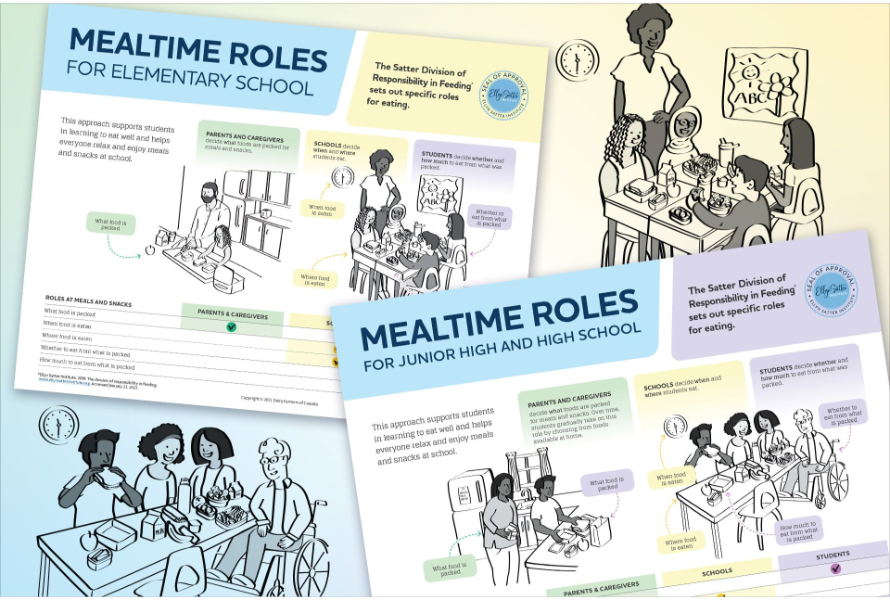Support students in learning to eat well and help everyone relax and enjoy meals and snacks at school.
How the Division of Responsibility can take the stress out of meals and snacks
Trust and respect are important aspects of meals and snacks at school and are also the foundation of the Satter Division of Responsibility in Feeding (Division of Responsibility).* Created by Registered Dietitian Ellyn Satter, this evidence-informed approach to feeding has been thoroughly researched and is recommended by groups such as Dietitians of Canada. Following the Division of Responsibility supports students in the long-term process of learning to eat a variety of foods and to make food choices.
What the Division of Responsibility looks like at school
Clearly understanding and applying everyone’s role at school can take the stress out of eating times and can help students feel more connected with themselves, their world, and their food.
Parents and other caregivers decide what foods are packed for meals and snacks. In junior high and high school, students gradually take on this role by choosing from foods available at home or purchasing foods at the school cafeteria or nearby stores and restaurants.
- The foods students bring to school reflect their families’ needs and resources. Trust that families are doing their best. Each child’s food experiences, abilities, and preferences are different.
Schools decide when food is eaten.
- Schedule meals and snacks at regular and consistent times.
- Have water available between meals and snacks.
Schools decide where food is eaten.
- Offer students a clean, comfortable place to eat. In junior high and high school, students are often allowed to leave school property; however, schools should still offer a designated eating space.
- Limit distractions such as screens and electronics while eating.
Students decide whether and how much to eat from what was packed. Learning to let students eat in a way that is right for them is an important part of following the Division of Responsibility.
- Trust students to decide whether or not to eat.
- Respect students’ decisions about how much to eat. This includes eating food in the order they choose.
- Trust students when they tell you they are full or they are hungry for more.
How to share this information with families
If families start to practise the Division of Responsibility, continuity in feeding approaches will develop that benefits students at school and at home. Here are some ideas to share the Division of Responsibility with families:
- Introduce your approach to feeding during school orientations or parent nights.
- Display a Mealtime Roles poster in eating areas.
- Have handouts available for families who want to learn more.
- Include content from these handouts in family communications (e.g., newsletters, handbook, website).
Don’t worry if this all feels very new to you
This approach to feeding may be different from how you grew up. Be patient with yourself and the families represented in your classroom as they learn more about mealtime roles. Feeding and eating are deeply personal and there will be tensions with unlearning old habits and learning new ones.
This article was reviewed by the Ellyn Satter Institute.
*Ellyn Satter Institute. 2019. The division of responsibility in feeding. ellynsatterinstitute.org. Accessed January 22, 2021.


